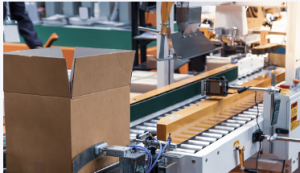RFID tags are a form of identification that automatically identifies objects through electromagnetic fields. Several RFID tags, including passive, active, marker, and inlay.
Active vs passive RFID tag. If you have an RFID system, you’ll need to understand the differences between active and passive RFID tags. They both have different benefits and limitations. Then, choose the best type for your application.
 Active tags are a great way to track assets, including high-value items such as cars and cargo. However, their higher cost makes them less suitable for simple inventory applications. Passive tags, however, are a much cheaper and simpler option. These tags require no battery power and only signal signals when an antenna tells them.
Active tags are a great way to track assets, including high-value items such as cars and cargo. However, their higher cost makes them less suitable for simple inventory applications. Passive tags, however, are a much cheaper and simpler option. These tags require no battery power and only signal signals when an antenna tells them.
In addition to their lower price, they also have several advantages. For instance, they are highly reliable and can survive harsh environments, and in addition, their signals are weaker but can be detected from a far distance.
Passive tags are ideal for small-scale operations, such as a key card or intelligent label. They can be used in various applications, including supply chain management and livestock tracking.
HF vs UHF RFID systems
There are several advantages and disadvantages between HF and UHF RFID systems. Before choosing the right solution for your business, you must first understand the technology and the difference between the two.
UHF RFID systems are designed for applications that require a higher level of data transfer. They also provide a more excellent read range than HF and LF. These RFID tags can be used for everything from warehouse and supply chain management to airline baggage tracking.
UHF RFID has a faster data transfer rate than HF. This technology also provides the ability to read multiple tags at a time. For example, a reader can read up to 200 RFID tags simultaneously. Similarly, UHF is cheaper than HF.
HF has a much shorter reading range. It can’t read tags that are placed on metal objects or if they are located in wet conditions. Also, it’s not as sensitive to interference as UHF. The short wavelength of HF allows it to pass through most materials. However, if you use a fabric with high reflectivity, you may experience detuning.
Inlays
RFID tag inlays are used for a variety of applications. For example, they help to identify and track items, animals, and people. Inlays also provide security and fraud protection and can be integrated into a product or business.
Several different methods can manufacture inlays. One of the most common is to print a label on a substrate. However, printing can lead to problems such as bumps, distortion, or reflections. Another option is to embed the tag into a finished product. RFID tag inlays are made from an antenna and chip bonded to a polyethylene terephthalate (PET) substrate. The chip contains circuitry for power conversion and data storage.
Antennas are usually etched from copper, and these are used for various applications, including asset tracking and event ticketing. Newer antennas are produced using more efficient manufacturing processes. A microchip’s design affects the tag’s performance, and different chips have different features and are subject to other test protocols.
RFID Marker tags
RFID Marker tags are small tags with a transmitter that can be embedded into underground pipes or assets. The device can monitor or record buried asset data and provide an accurate location of the purchase. These tags can also be used to monitor the condition of underground pipes, such as the depth and type of the lines.
RFID technology can track inventory, order fulfilment, shipment, and the intended destination of the goods. This technology also helps retailers reach 100% order accuracy. RFID technology is also applied to thoracoscopic surgery support systems designed to mark tumours inside organ tissue. This system allows surgeons to locate cancer, even if the tissue is nonpalpable.
Another potential application of the technology is to replace metal tumour markers. In the past, surgeons had to place hook wires into the tumour before surgery. However, using RFID technology, cancer could be tagged, eliminating the need for hook wires.
RFID tags are an excellent way to track inventory and assets. They also help improve your supply chain. There are various ways to use these tags, depending on your needs. Unlike barcodes, RFID tags don’t require a line of sight to be read. It means they can be read at a distance without the owner’s knowledge.